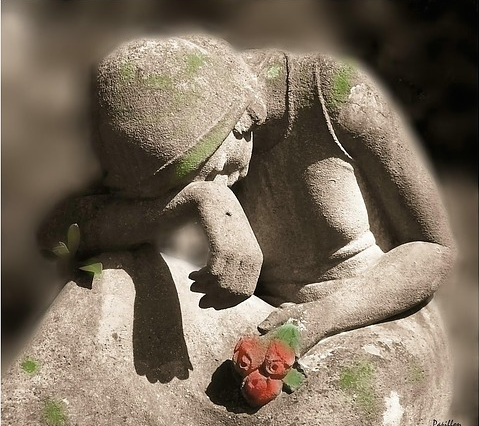One of the most difficult challenges we face is the death of a loved one.
With the constant waves of grief and anger, mindfulness seems to fall to the bottom of our list of priorities. Nothing matters but the loss, pain, and anguish.
Two years ago, my brother died suddenly at the age of 16. For a long time, I was inconsolable. My mental health deteriorated, and a gray haze settled over my life. Eating was a chore; everything tasted like ash. My body went on autopilot, dragging my heart, mind, and soul along with it.
A few weeks after his death, I went to my psychiatrist for help. It would be the first time that I told someone what had happened. Talking about it out loud would force me to face the truth and set it in stone.
I sat in the waiting room, quivering, and my mouth went dry. My heart was racing as I watched the seconds tick by on the clock.
“Cailin?” My psychiatrist stood there in his dress shirt and pants waiting patiently.
My stomach jolted as I stood, and my vision blurred. I traced the wall with my fingers to stay upright while he started a polite conversation. With my disjointed responses, he immediately knew that something was wrong. After a few stuttered attempts, I finally spit out what had happened in a long rush. My little brother was dead.
It was official. It was like the air became solid and crashed to the ground. I could not avoid the truth or take it back. My brother was gone. The terrible truth filled the room and pressed down on me.
This awareness was not the kind of mindfulness that made me feel good about the present. I had to open the door to my sorrow, look inside, and be there. I would never hear my brother’s deep laugh again or see him grow into the size of his hands and feet. His boyish smile would never again light up the day.
After listening to me, my psychiatrist encouraged me to set a mourning period. I picked a date far enough in the future to not overwhelm me, but also close enough to limit how much of my life would be dedicated to grief.
During this period, I wrote on old mugs everything that made me angry about the situation. I stayed with my feeling and let myself experience it. Once I finished writing, I put them in a paper bag and smashed them to bits with a hammer. Other times, I listened to music about loss, and I cried without reserve and wished I could hold him just one more time.
After I had reached the end of my mourning period, I made room for some light to penetrate my gloom. I allowed myself to laugh again and to enjoy the simple things. The grieving feelings would still come often, but I also had positive moments of relief.
One day, I had another episode of unbearable grief. The ache was just as fresh as the day he had died. I cried long and hard as usual, but when the sadness eased a little, I decided to make myself a cup of tea. I wanted to embrace a peaceful moment while processing this wave of pain.
I listened to the bubbles rolling in the teapot. While the tea bags steeped, his face lingered in my mind, and I took some shuddering breaths. When it was finished, I brought my tea set to the table. Each piece was painted with wildflowers and butterflies.
The amber liquid poured delicately from the teapot and swirled into the dainty cup with curls of steam. I used golden tongs to select a cube of sugar from the sugar bowl and tipped some milk from the matching pitcher. I stirred the contents with my golden spoon.
The rich, malty scent soothed the tightness in my throat, and I released another shiver of grief. I closed my eyes, pressed my lips to the cup, and sipped the aromatic, hot liquid. It slid down my throat and warmed me. I made room for my gaping hole and for practicing mindfulness at the same time.
After this experience, I found that I needed to return to myself in every state. Losing a loved one can inflict the worst pain we experience in life. When we spend time with these feelings, it is not pleasant, but it is releasing. This pain is part of who we are, and we have to be with ourselves to be whole. When we are ready for the positive parts of life again, we can be present with all that is good, all that is hard, and all that is us.
~
~
~
Author: Cailin Van Eizenga
Image: Pixabay
Editor: Travis May
Copy Editor: Callie Rushton
Social Editor: Waylon Lewis







Read 26 comments and reply